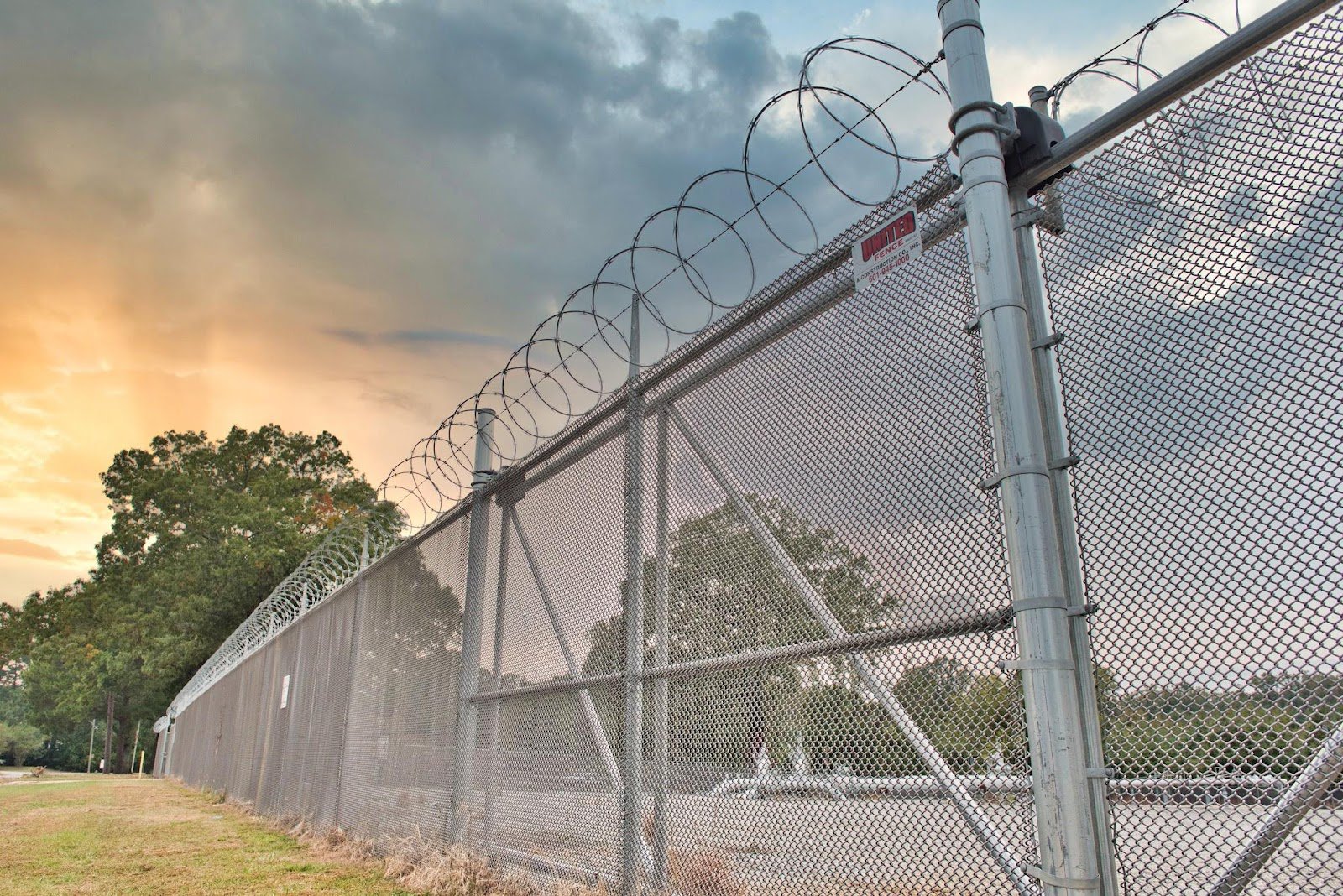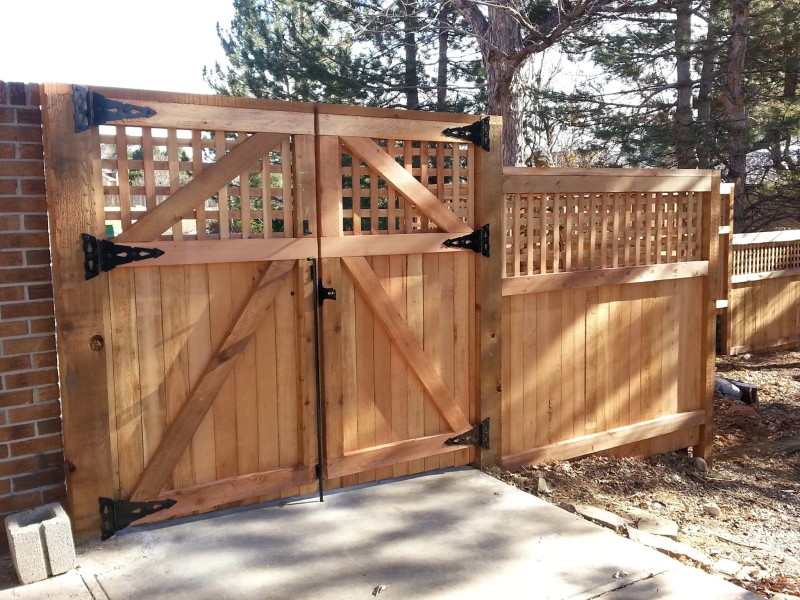All Categories
Featured
Your fencing is subjected to different climate problems year-round, and while it functions as a vital part of your residential or commercial property, it's additionally among one of the most at risk elements when it comes to weather-related damages. Extreme winds, hefty rainfall, severe temperatures, and UV exposure can all take a toll on your fencing's stability, resulting in tear and use. There are a couple of actions you can take to protect your fencing and extend its life-span. Right here are some efficient methods to protect your fencing from weather-related damages.
Wooden Fencings: While timber is a timeless selection for fence, it is susceptible to warping, pest, and rot damage, specifically in areas with high dampness. Pressure-treated timber or cedar is extra long lasting, but normal upkeep is necessary to maintain it in excellent problem. Plastic Secure fencing: Plastic is an outstanding choice for those trying to find a weather-resistant and low-maintenance fence. It's unsusceptible dampness, will not warp or fracture in the warmth, and resists fading from UV rays. Steel Fencing: Wrought iron and aluminum are sturdy materials for fence, however they require a rust-resistant coating to safeguard them from deterioration because of wetness. A protective finishing or regular upkeep can stop corrosion and extend the life of steel fencings. Compound Fence: Made from a mix of timber fibers and plastic, composite fences are very resistant to weather aspects, consisting of wetness, warm, and UV rays. This product uses a balance of toughness and aesthetic appeal. Selecting a product fit to your climate will supply far better defense for your fence the long-term.
Seal or Stain the Wood: Using a premium sealant or tarnish to your timber fencing creates a water-proof barrier that protects against dampness from getting in the timber. It additionally helps secure the wood from UV rays, which can trigger staining and drying out. Reapply Sealer Frequently: With time, the safety barrier of your sealer or stain can use down. Depending on your climate, it's a great idea to reapply every one to 2 years to maintain the timber shielded. This therapy will preserve the fencing's look, avoid rot, and prolong its lifespan.
![]()
For extra protection, consider using wind-resistant mesh screens or panels in locations where wind is a substantial problem. This added layer can assist minimize the force that the wind applies on your fencing.
Check Water Drainage: Make sure that the ground around your fencing inclines away from the blog posts. Appropriate drainage allows water to move away from the fencing, stopping moisture buildup. Set Up Drainage Solutions: In locations where drain is a concern, consider adding a French drain or crushed rock around the base of your fence posts to redirect water away from the structure. Excellent water drainage can protect against rot, corrosion, and various other kinds of weather-related degeneration.
![]()
![]()
Concrete Grounds: Establish fencing posts in concrete to stop them from loosening up over time as a result of dirt disintegration or shifting ground. Metal Dental Braces: Adding metal braces to fence articles can provide additional stamina and decrease the threat of damaging or leaning. Reinforcing your articles makes certain that your fence will remain in location, also throughout extreme weather condition.
For wooden fences, delicately wash the surface area with a mild detergent to eliminate dust and crud. For plastic fences, make use of a soft cloth and cleansing option to avoid buildup. For metal fences, check for rust and sand it off prior to using a fresh coat of paint. Conclusion. Your fencing is a vital function of your home, and with the best care, it can hold up against the difficulties presented by the weather. By selecting sturdy materials, executing normal maintenance, and strengthening weak points, you can protect your fence from the elements and prolong its life. Routine assessments, applying safety finishes, and taking steps to control dampness and wind exposure will certainly assist make certain that your fence continues to be solid, functional, and attractive for many years ahead.
- Select Weather-Resistant Materials. The products you choose for your fencing can have a significant influence on its capacity to withstand the aspects. Various materials are better equipped to manage particular weather. Here's a malfunction of just how numerous materials hold up versus the weather:
Wooden Fencings: While timber is a timeless selection for fence, it is susceptible to warping, pest, and rot damage, specifically in areas with high dampness. Pressure-treated timber or cedar is extra long lasting, but normal upkeep is necessary to maintain it in excellent problem. Plastic Secure fencing: Plastic is an outstanding choice for those trying to find a weather-resistant and low-maintenance fence. It's unsusceptible dampness, will not warp or fracture in the warmth, and resists fading from UV rays. Steel Fencing: Wrought iron and aluminum are sturdy materials for fence, however they require a rust-resistant coating to safeguard them from deterioration because of wetness. A protective finishing or regular upkeep can stop corrosion and extend the life of steel fencings. Compound Fence: Made from a mix of timber fibers and plastic, composite fences are very resistant to weather aspects, consisting of wetness, warm, and UV rays. This product uses a balance of toughness and aesthetic appeal. Selecting a product fit to your climate will supply far better defense for your fence the long-term.
- On A Regular Basis Deal With Wooden Fencings. If you have a wood fencing, shielding it from dampness, sunshine, and temperature level variations is important. Timber can soak up dampness from moisture, snow, or rainfall, causing it to rot and degrade. Here's exactly how you can shield wooden fences:
Seal or Stain the Wood: Using a premium sealant or tarnish to your timber fencing creates a water-proof barrier that protects against dampness from getting in the timber. It additionally helps secure the wood from UV rays, which can trigger staining and drying out. Reapply Sealer Frequently: With time, the safety barrier of your sealer or stain can use down. Depending on your climate, it's a great idea to reapply every one to 2 years to maintain the timber shielded. This therapy will preserve the fencing's look, avoid rot, and prolong its lifespan.

- Set up Windbreaks. Solid winds can create significant damages to fences, especially those made of light-weight products or high structures. These all-natural obstacles can aid deflect wind, stopping straight gusts from damaging your fence.
For extra protection, consider using wind-resistant mesh screens or panels in locations where wind is a substantial problem. This added layer can assist minimize the force that the wind applies on your fencing.
- Make Sure Proper Drain Around Your Fencing. Standing water is just one of the leading sources of fence damage, specifically for wood fences. Water can deteriorate the fence articles, causing them to rot and wear away faster. To stop this:
Check Water Drainage: Make sure that the ground around your fencing inclines away from the blog posts. Appropriate drainage allows water to move away from the fencing, stopping moisture buildup. Set Up Drainage Solutions: In locations where drain is a concern, consider adding a French drain or crushed rock around the base of your fence posts to redirect water away from the structure. Excellent water drainage can protect against rot, corrosion, and various other kinds of weather-related degeneration.

- Trim Overhanging Branches and Vines. Overhanging tree branches and vines can create damages to your fencing during tornados or high winds. To shield your fence, trim any kind of branches or plants that hang over or near the fencing consistently.
- Strengthen Fence Posts. Fencing messages are susceptible to changing, leaning, and decomposing, especially throughout durations of severe weather condition. If your fencing is in a location that experiences high winds or ices up throughout winter season, it's vital to reinforce the messages to keep stability.

Concrete Grounds: Establish fencing posts in concrete to stop them from loosening up over time as a result of dirt disintegration or shifting ground. Metal Dental Braces: Adding metal braces to fence articles can provide additional stamina and decrease the threat of damaging or leaning. Reinforcing your articles makes certain that your fence will remain in location, also throughout extreme weather condition.
- Normal Assessments and Upkeep. Check your fence after tornados or heavy rainfall to look for issues such as loose boards, drooping messages, or rusted areas. In addition, cleaning your fencing occasionally assists keep its condition.
For wooden fences, delicately wash the surface area with a mild detergent to eliminate dust and crud. For plastic fences, make use of a soft cloth and cleansing option to avoid buildup. For metal fences, check for rust and sand it off prior to using a fresh coat of paint. Conclusion. Your fencing is a vital function of your home, and with the best care, it can hold up against the difficulties presented by the weather. By selecting sturdy materials, executing normal maintenance, and strengthening weak points, you can protect your fence from the elements and prolong its life. Routine assessments, applying safety finishes, and taking steps to control dampness and wind exposure will certainly assist make certain that your fence continues to be solid, functional, and attractive for many years ahead.
Latest Posts
Dependable Commercial Roofing Providers by Weathercraft
Published May 26, 25
2 min read
Safeguard and Enhance Your Home with Weathercraft's Siding Providers
Published May 23, 25
1 min read
Find the Premier Auto Repair Coupons in Montclare, Chicago
Published May 23, 25
1 min read